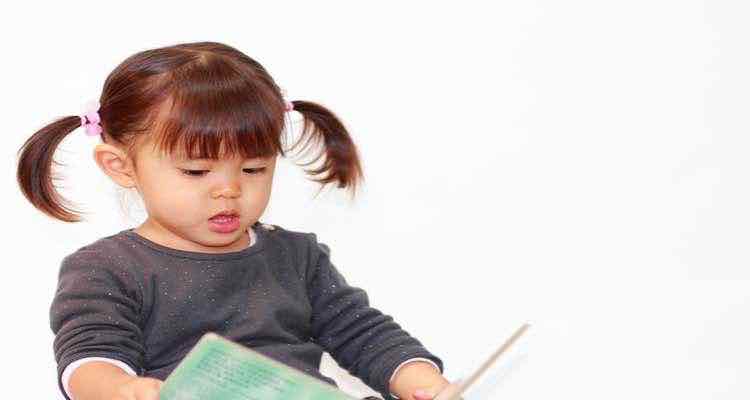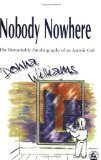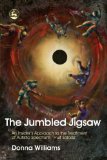Featured
Posted by Kathy Brodie on January 4, 2020.
Kathy Brodie on January 4, 2020.

I had the enormous pleasure of interviewing TEDx speaker and author Dr Brynn Welch on the last Early Years Summit. Dr Welch’s particular research interest is diversity in young children’s literature and having books where children can ‘see themselves’. It’s something she cares passionately about – so much so that she wrote her own book for her son, Ben, called ‘Bennie Goes Up, Up, Up‘.
The interview really made me think about the books that we provide for children and how it is so easy to choose books without thinking about the messages we are sending children subliminally. For example, you don’t have to be a star athlete or President – you can just be you enjoying regular activities. It also reminded me of something that Carmen Powell said in October 2019 when talking about her book ‘Matthew and the Magic Goat‘, that the main character in her story has a prosthetic limb, but this isn’t mentioned or play a part in the story. It’s simply part of his life.
Having books that reflect children’s own race, ethnicity, disabilities, family structures and every other facet of their lives is so important because it helps them to relate to the story and the messages about making friends, being kind or just reflecting their own experiences. Belonging and being part of the wider community is an essential part of self-esteem, self-worth, empathy, understanding, Theory of Mind and so much more – but is incredibly difficult if you can’t relate to the stories that are being told.
It is also important that children appreciate and value families that are different from their own, with different cultures, heritages, traditions and artefacts, especially if they are unlikely to experience this in their immediate environment. Books may be their only window onto the wider, multicultural world. (more…)
Featured
Posted by Kathy Brodie on May 5, 2017.
Kathy Brodie on May 5, 2017.

The month of May is National Share a Story month. For 2017 the theme is ‘Picture a Story’, encouraging children to look at illustrations and pictures in books. This is part of the Federation of Children’s Book Groups (FCBG) aim of bringing children and stories together.
It reminded me of a visit that I had to an art gallery with Early Arts many years ago. We were asked to look at the pictures hanging on the wall, and then to look at them through a kitchen roll tube. It was amazing how the pictures looked different when you viewed them in this way – picking out the details – even if the detail was a patch of colour or a seemingly insignificant piece of background, it suddenly came alive.
Of course, this is a technique that great authors have been using for many years, from the Ahlberg’s ‘Peepo!’ book to Nick Sharratt’s ‘Shark in the Park’. Another Ahlberg book where the illustrations are as much of the story as the text is ‘Each Peach Pear Plum’ (and I used to know this off by heart when my children were small!). These delightful illustrations encourage both careful observation and also an understanding of the nursery rhymes and stories, making it a great book to start discussions about different stories.
One of my absolute all time favourite writer/illustrators – and I have to confess I have many favourites
Featured
Posted by Kathy Brodie on October 19, 2008.
Kathy Brodie on October 19, 2008.

 This is an amazing reference book – clear, concise and very enjoyable to read. I actually took my copy as holiday reading and thoroughly enjoyed it!
This is an amazing reference book – clear, concise and very enjoyable to read. I actually took my copy as holiday reading and thoroughly enjoyed it!
It is a book about educational theorists who have shaped the way we view children’s learning over the years, compiled in chronological order. The reader can appreciate how one theorist has built on, or disputed, the works of previous theorists. So we can see how Chris Astley has built on Piaget’s work on schema, for example.
If that sounds as dull as it comes – don’t worry, it isn’t! The authors have written in an easy to read format with plenty of cross references and further reading for when you want to find out in depth about a particular theorist.
I think this book would be excellent if you are just starting on a course and need to know about who the educational theorists are and their areas of interest. Unusually I would also recommend this book to any experienced practitioner who just needs to brush up on their knowledge – or rekindle the flame that first inspired them to find out about how children do learn.
You can get more information from Practical Pre-school.
Featured
Posted by Kathy Brodie on October 17, 2008.
Kathy Brodie on October 17, 2008.

 This book will almost certainly make you think about autism in a totally new way. Donna Williams had a very difficult childhood which she has documented with extreme frankness. It is written in separated paragraphs which I initially found broke the flow of the writing, but as I got used to it, and read the content, I realised that this is possibly how the author actually compartmentalises her life. Similarly there are huge sections written about minutiae and a few lines about massive events.
This book will almost certainly make you think about autism in a totally new way. Donna Williams had a very difficult childhood which she has documented with extreme frankness. It is written in separated paragraphs which I initially found broke the flow of the writing, but as I got used to it, and read the content, I realised that this is possibly how the author actually compartmentalises her life. Similarly there are huge sections written about minutiae and a few lines about massive events.
Importantly this book gave me an insight into how a child with autism might view the world, consequently making me empathise more when working with children. Behaviour that, at first glance, seemed irrational or combative made more sense when armed with the knowledge from this book.
This excellent book is available from Amazon
Featured
Posted by Kathy Brodie on October 16, 2008.
Kathy Brodie on October 16, 2008.

 This is the second book I have read by Donna Williams and I am just as impressed, though for different reasons.
This is the second book I have read by Donna Williams and I am just as impressed, though for different reasons.
The first book I read was Nobody, Nowhere and is her autobiography (see earlier article) whereas this one is a text book which covers the very many and varied aspects of autism and its manifestations. I found this immensely thought provoking, particularly the parallels and differences between autism and aspergers.
It has been a book which I have dipped into and out of, not least because there is an awful lot of medical references which I have had to go and look up! None the less it is extremely informative and an excellent addition to the bookshelf for anyone interested in this area of child development.
It is available from Amazon






